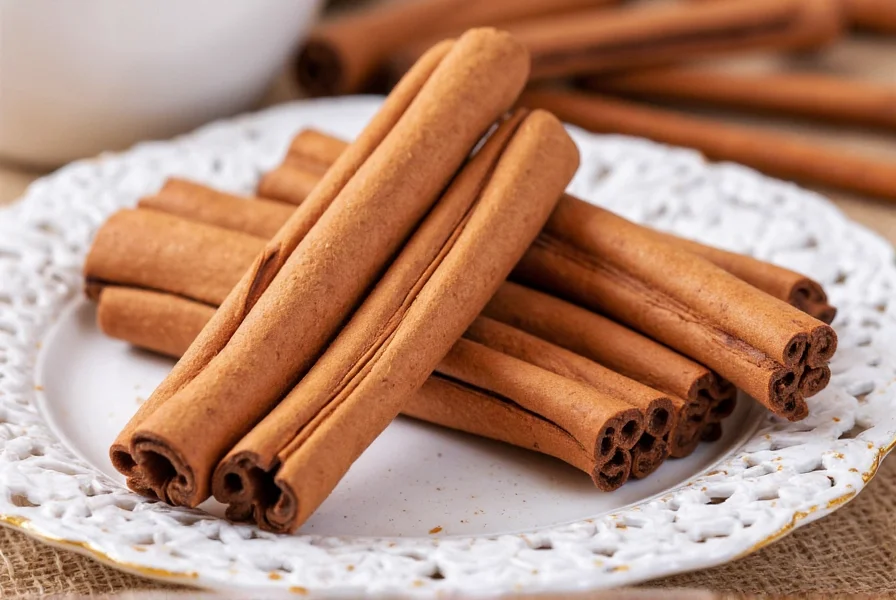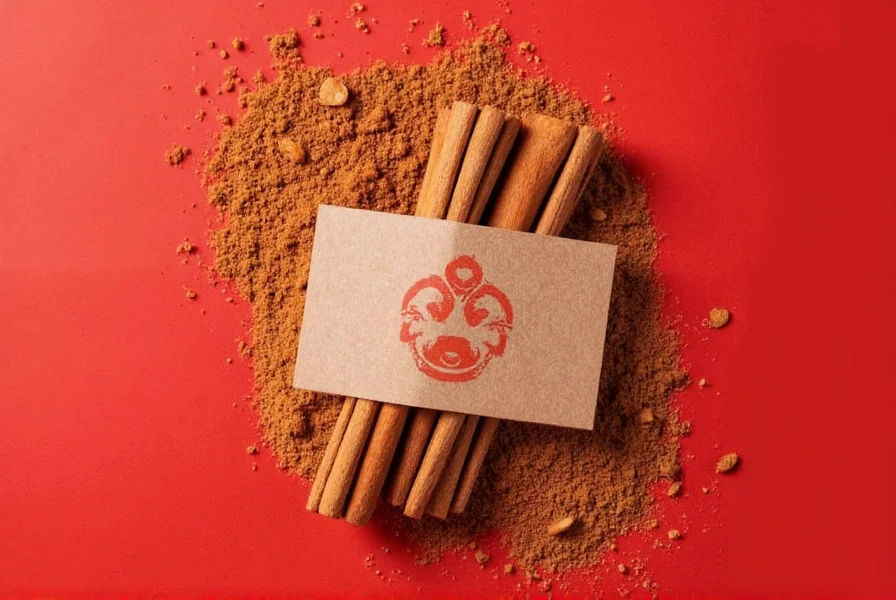Chinese cinnamon, also known as cassia, is the most common type of cinnamon found in supermarkets worldwide. Unlike the more delicate Ceylon variety, Chinese cinnamon has a bold, spicy flavor and higher coumarin content, requiring careful consumption. This guide covers everything you need to know: how it differs from other cinnamon types, culinary uses, health benefits with safety tips, and how to choose the best quality for your kitchen.
| Feature | Chinese Cinnamon (Cassia) | Ceylon Cinnamon | Saigon Cinnamon |
|---|---|---|---|
| Origin | China | Sri Lanka | Vietnam |
| Texture | Thick, rough bark | Thin, papery layers | Dense, thick bark |
| Flavor Intensity | Strong, spicy, slightly bitter | Mild, sweet, complex | Very strong, sweet-spicy |
| Coumarin Content | High | Low | High |
| Price | Affordable | Expensive | Moderate |
Flavor Profile & Aroma
Chinese cinnamon delivers a powerful, robust flavor profile that stands out in any dish. Its characteristics include:
- Taste: Sweet-spicy with noticeable bitterness and warming finish
- Aroma: Earthy, woody, and intensely aromatic
- Best Paired With: Star anise, ginger, cloves, nutmeg, citrus zest
Culinary Uses of Chinese Cinnamon
Chinese cinnamon's versatility makes it a kitchen staple. Key applications include:
- Stews & Braises: Essential in Chinese five-spice blends for red-cooked pork and beef stews
- Baked Goods: Use sparingly in cakes and cookies (1/2 teaspoon per recipe) due to its intensity
- Hot Drinks: Enhances mulled wine, chai tea, and hot cocoa with rich depth
- Rice Dishes: Infuse pilafs or congee with cinnamon sticks for warm complexity
- Marinades & Rubs: Adds smoky-sweet notes to barbecue rubs and lamb preparations
Health Benefits & Safety Considerations
While Chinese cinnamon offers notable health benefits, its high coumarin content requires careful consumption:
- Anti-inflammatory Properties: May reduce inflammation when used in moderation
- Blood Sugar Regulation: Studies show potential for improved insulin sensitivity (consult doctor for medical use)
- Antioxidant-Rich: Fights oxidative stress with natural compounds
- Coumarin Warning: European Food Safety Authority recommends max 0.1mg per kg body weight daily. For most adults, limit to 1-2 teaspoons daily.
| Brand | Type | Features | Best For |
|---|---|---|---|
| Simply Organic Cassia Cinnamon | Ground | Certified organic, non-GMO, kosher | Everyday baking and spice mixes |
| Frontier Co-op Cinnamon Sticks | Whole | Packaged in sustainable containers, fair trade | Teas, stews, and infusion-based recipes |
| McCormick Cinnamon Cassia | Ground | Trusted household name, affordable | Quick additions to oatmeal or toast |
Cooking Tips & Recipe Ideas
- Red Cooked Pork: Simmer pork belly with soy sauce, star anise, ginger, and a cinnamon stick for authentic Chinese flavor
- Spiced Apple Oatmeal: Stir 1/4 tsp ground cassia with warm milk and rolled oats for a cozy breakfast
- Homemade Chai Tea: Combine black tea with cinnamon sticks, cardamom, ginger, and clove for aromatic brew
- Beef & Mushroom Stir Fry: Add broken cinnamon stick during stir-frying for unexpected earthy depth
Frequently Asked Questions
What is the difference between Chinese cinnamon and regular cinnamon?
"Regular cinnamon" in most supermarkets is actually Chinese cinnamon (cassia). Key differences: Chinese cinnamon has thicker bark, stronger spicy flavor with bitterness, and significantly higher coumarin content compared to Ceylon cinnamon's delicate, sweet profile with multiple thin layers.
Is Chinese cinnamon safe to consume regularly?
Yes, but with strict moderation due to high coumarin levels. European Food Safety Authority recommends maximum 0.1mg coumarin per kg body weight daily. For most adults, this means 1-2 teaspoons daily. For regular high consumption, switch to Ceylon cinnamon which has 99% less coumarin.
Can I substitute Chinese cinnamon for Ceylon cinnamon in recipes?
Yes, but reduce quantity by 50%. Chinese cinnamon's intensity means 1/2 teaspoon cassia replaces 1 teaspoon Ceylon. Critical in delicate recipes like custards where strong flavors dominate.
Why is Chinese cinnamon cheaper than other varieties?
Chinese cinnamon grows faster in large-scale plantations, yields more bark per tree, and has simpler harvesting than Ceylon's labor-intensive peeling of delicate inner bark layers. These factors make it 3-5x more affordable.
How should I store Chinese cinnamon to maintain freshness?
Store whole sticks in airtight containers away from heat/light for up to 4 years. Ground cinnamon lasts 1-2 years. Keep in dark cupboard (not spice rack), avoid moisture and temperature fluctuations near stoves or dishwashers.
Conclusion: Should You Add Chinese Cinnamon to Your Spice Rack?
Chinese cinnamon is an essential spice for bold flavor seekers. Its affordability, versatility in savory and sweet dishes, and rich cultural history make it a valuable pantry staple—when used responsibly. Always prioritize moderation due to coumarin content, and consider Ceylon cinnamon for high-frequency consumption.












 浙公网安备
33010002000092号
浙公网安备
33010002000092号 浙B2-20120091-4
浙B2-20120091-4